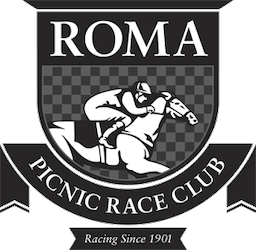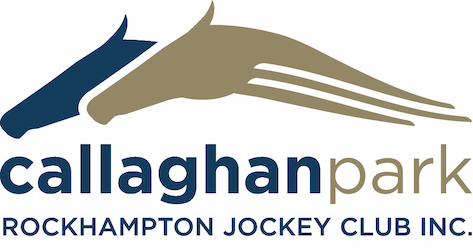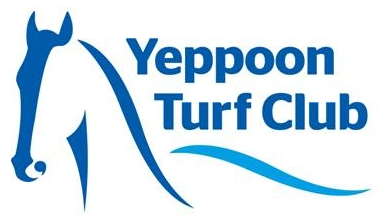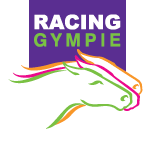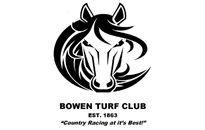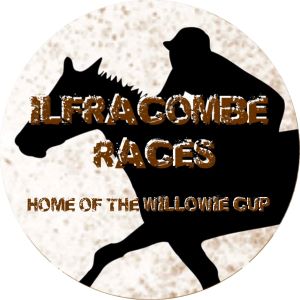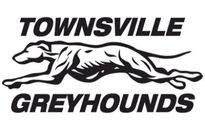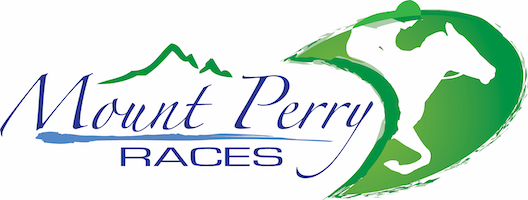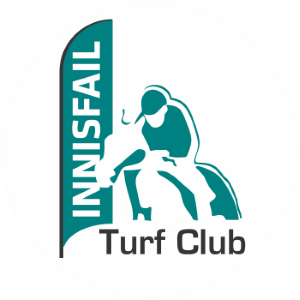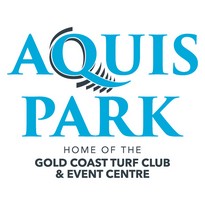
Tales Of The Past: Racing's charitable heart keeps pumping
Cover photo: Esk's 2007 Mater Charity Day
Words and photos by Ross Stanley
The thoroughbred fraternity’s capacity for caring is directed to cases within its ranks and to causes in outside communities.
The following broad sweep of examples portrays the wide-ranging scope of the strategies and the beneficiaries over time.
THE INDUSTRY HELPS ITS OWN
The Queensland Turf Club instituted its Apprentice School at Eagle Farm in 1939. The young riders, all male and all aged under 21, were required to reside with their master. The teaching of riding for the intake of 42 boys was entirely the province of their trainer.
The report in the January 1961 issue of the QTC Racing Calendar about the School’s Annual Break-Up indicated the club chairman, Dr John Power, presented each apprentice with a token of appreciation of their giving up Saturday nights to raise money for various charitable bodies via their Scooter Derby races.
During 1960, the boys, with the assistance of many of the women and men associated with the Apprentices School Committee, raised well over £2000.
The specific purpose that was stated for the Apprentice School “was to make the boys better citizens by fitting them with the necessary knowledge that would allow them to take their place amongst society,” the QTC Racing Calendar reported.
“The School has regular visits from top men in their calling who lecture and instruct the boys” in around 20 areas. The list included religion, etiquette, English, health and hygiene, diet, equine anatomy, traffic rules, laws, physical instruction, boxing, sport and charity.
The voluntary committee also put on dances, swimming carnivals and the widely welcomed Annual Picnic and Sports at Eagle Farm for all Licensees.
When it comes to the welfare of a wider body of industry workers, the Licensees Benevolent Fund, which kicked off in 1929, morphed into the Licensees Distress Fund and is now the Licensees Assistance Association with a new subset known as Queensland Racing Industry Support Program (QRISP).
Successful but brief fundraisers were the 1983 and 1984 editions of a state-wide racing calendar that contained the venues and dates for the 12 months.
The item hit the spot with Christmas shoppers but was discontinued when the allocation of racing dates were switched to a mid-year to mid-year coverage.
Present office bearers and committee members of QRISP are Bill Andrews, Cameron Partington, Lyn Tipper, Di Robinson, Jim Murdoch, Les Ross, Mal Petrofski and Michael Rodd.
A principal asset used by licensees is the Association’s therapeutically valuable holiday unit at Caloundra.
Early this century, the Association lost the financial support of the fines and penalties incurred by licensees such as jockeys and trainers and it is now dependent on the backing of sponsors and donors.
Stilettos and Saddles is a wonderful Brisbane social group. Through the efforts of Lorraine Erhart and her team, it offers morale-boosting companionship and fellowship through newsletters, gatherings, outings, lunches and the all important Christmas Party. The network is highly valued.
Many of the members trace their relationships back to the days when the Ascot-Doomben-Hendra district was the domain of backyard stables. Long retired jockeys, for example, still get the chance to interact with their fellow apprentices of the 1960s.

A CASE STUDY
Unfortunately, there is a very long list of riders whose lives were turned on their head in a split second.
There was a double casualty situation at Toowoomba in April 2017 when trackwork riders Ben Saunders and Wade Clasohm came down near each other at the same time, resulting in serious injuries.
The Racing Reaches Out fundraiser at Clifford Park the following month harvested $93,800 for each of the two former race riders.
Caroline Allardyce, the Lockyer Valley trainer and mother of premier jockey Jimmy Orman, contributed to the fund by picking up a service fee to Hidden Dragon.
She put her aptly named Show A Heart mare Showabitofheart to the Lyndhurst Stud stallion. Racing as Now and Ben, the resultant foal saluted at Texas last December.
Another benefit function that took in nearly $10,000 was a boxing night, with jockeys as participants, organised by Brendon Smith and jockey Brooke Stower. The team of Josh Oliver, Beau Appo and Stower claimed the inaugural Ben Saunders-Wade Clasholm Cup.
Clasholm and Saunders followed up with an on-air promotion for Radio TAB’s Appeal for the National Jockeys Trust, the country’s key mainstay for injured and ill hoops and their kin.
Back in January 2012, $29,000 was generated at an auction during Magic Millions for another Toowoomba rider Kristy Banks. She suffered spinal injuries in a local fall on New Year’s Eve.
Jockey silks and breeches signed by all riders in the 2012 Magic Millions Juvenile Classic were purchased by Coolmore’s Tom Magnier for $26,000.
The whips from jockeys Tommy Berry and Paul Hammersley, winners of the Magic Millions Classic and Guineas, fetched $3200.
ANOTHER AVENUE
In New South Wales jockey Kevin Langby and his wife, Lynne, set up the Have A Heart For Kids Foundation after the loss of their nine-year-old son Jason to heart disease in 1987. Proceeds were directed to the cardiac ward at Camperdown Children’s Hospital in Sydney.
In more recent times, Langby has built up a set of retired jockey networks in New South Wales for social get-togethers and comradeship.

THE INDUSTRY SUPPORTS OTHERS
Race clubs, both large and small, have responded to all sorts of general public circumstances. Wartime has always demanded plenty of attention.
The Boer War conflict that fired off in 1900 between Britain and her Empire and two African republics saw the colonies in pre-Federation mode send troops to help the mother country.
Compared to the modern era, infrastructure during and after that war was rudimentary. Patriotic Funds were established to fill gaps.
Although the Commonwealth Government accepted a number of responsibilities during World War I, the Patriotic Funds were still vital. Some campaigns were tailored to help Allies such as France and Belgium.
Queensland Turf Club and Tattersall’s in Brisbane both conducted patriotic meetings in the autumn of 1900.
The drawing of the first Golden Casket in 1917 by the Queensland Patriotic Fund was to raise money to support veterans. It carried a first prize of £5000.
There are countless press reports about Patriotic race meetings. A few examples show the extent of their presence.
The Brisbane Telegraph (December 14, 1918) reported that, as a result of a patriotic race meeting held recently at Urandangie to the south west of Mount Isa, £306 will be forwarded to the War Nurses Fund.
Saturday, August 28, 1915, was designated as Queensland Patriotic Day. Race meetings were held at Ipswich and Gympie in the south-east corner.
In June 1940, the QTC committee decided to give £6000 to patriotic funds and to lend £5000 free of interest to the Federal Government.
The same club on December 27, 1949, held its first meeting for charity since the war. The target for distribution was £7000. The nine-race card attracted 221 horses.
Ernest Scott, in his chapter on The Patriotic Funds in The Official History of Australia in the War, estimated that up to 1919, patriotic funds across Australia raised at least £12,121,872.
A horde of individuals have gone quietly along, pitching in when opportunities appear. Three such instances triggered by women follow.
In Melbourne, Edith Alice Widdis broke new ground in very different circumstances.
Bill Ahern in The Saga of 127 Cup Winners wrote that, “the Victorian Club committee in 1915 set aside its rule against women being allowed within the precincts of the club so that it might honour Mrs Widdis, as owner of the Cup winner.”
The galloper was her VRC Derby hero Patrobas. The mother of eight had secured a breakthrough victory for her gender.
“Some of the cynics were wondering what Mrs Widdis would do about the time-honoured club tradition that the owner of the Cup winner ‘declare the bar open in honour of the winner’. Mrs Willis, well primed by her husband, was equal to the test. She told the big crowd that, with their permission, she would dispense with tradition and instead, make a donation of £200 in the name of the club to the Patriotic Fund. The roar of approval was terrific.”
A story goes that, instead of following the practice of providing wine for the members, Mrs Widdis, a capable horsewoman, had decided to distribute the quantity usually consumed amongst the returned wounded soldiers at the Melbourne Hospital and the St. Vincent Hospital. She also made a personal contribution to the Patriotic Fund.
Renowned equine artist Maryanne Lillecrapp is a long-time supporter of TLC for Kids, an organisation that caters for sick children and their families.
The Sunshine Coast resident donated her painting of the 2015 Melbourne Cup stars Prince of Penzance and Michelle Payne to the charity.
Furthermore, Lillecrap gave a framed Buffering print to Hendra State School to go with a mural she helped the students create. Retired jockey and highly successful media presenter Bernadette Cooper played an instrumental role in setting up the artistic exercise at the school her daughter Stella attended.
Cooper was also the impetus behind Sky Racing’s Playbook project known as the Summer Racing Legends. The aim was to raise funds for Abigail Sweeper, the 10-year-old who was left wheelchair bound after falling from her horse at a pony club event in 2019.

RACING QUEENSLAND
Racing Queensland’s partnership with the Royal Flying Doctor Service (Queensland Section) reached new heights with the Country Cups Challenge raising $116,810 during 2023.
The tally was $113,560 in the 2022 Country Cups Challenge, last year’s fundraising efforts brought the total to $230,370 over the first two years of the partnership.
RFDS has been saving lives in rural and remote Queensland for more than 95 years.
Of course, Racing Queensland’s Off The Track programs serve as a reminder of the need for an appropriate humane outlook about the retirement chapter for racehorses.
The QTC, a predecessor of the Brisbane Racing Club, introduced a dual benefit scenario by staging its annual trials for two-year-olds on a Sunday in the 1970s.
The late September programs, that usually comprised more than a dozen heats, aided the Children’s Hospital Appeal. The fabulous day with plenty of quick fire action was an inexpensive racing debut opportunity for hordes of parents and their kiddies. It was a great experience for patrons of all ages that had never witnessed a horse race.
The Brisbane Racing Club Foundation was established in November 2018 as a formal initiative for contributions to community life.
It has established the practice of facilitating 50-50 Charity Raffles on racedays. The formula is simple. Half the takings go to the organisation. Half the pool is for prizes for ticket buyers.
A team of volunteers roam the course with the certain knowledge that the more tickets they sell, the bigger the prize to be won will be and that they will raise more money.
Between 2018 and 2023, more than $700,000 has been sourced in this manner.
The 2024 Stradbroke Season 50-50 Raffles have been conducted by the Royal Brisbane and Women’s Hospital Foundation, Wounded Heroes Australia, Reason To Thrive, Guide Dogs and Rize Up Australia.
On other occasions it has been by Samford Riding for the Disabled, National Jockeys Trust, Queensland Brain Institute, Hendra Pony Club, Carl Webb Foundation, Our Lady Help of Christians, Women’s Legal Service Queensland and several country racing clubs.
Previously, on Sky Racing Queensland Guineas Day, the BRC Foundation launched a novel idea for the Life With Horses organisation. All the saddlecloths for the BRC Members QTIS Quality Handicap bore the names of a large set of club members. In total, the 15 items covered every member. The distribution was decided by bids in silent auctions.

ABOUT OTHER CLUBS
In 1965, in the fourth annual report of TAB Queensland, the list of clubs showed Augathella Convent Benefit Race Club and a likewise title at Tambo with Charleville and Sedan Dip both home to Ambulance Benefit Race Clubs. In previous eras a number of clubs were specifically charitable in purpose.
Toowoomba Turf Club’s website states that “currently, over 30 major community fundraising events are held at Clifford Park annually with an excess of $300,000 raised per annum.”
The annual Cairns Amateurs carnival partners with Far North Queensland Hospital Foundation. A record return of $31,000 was registered in 2021.
Chinchilla’s 2022 Christmas Race Day was one of homage to Constable Rachel McCrow, Constable Matthew Arnold and Alan Dare, the trio who had lost their lives in the horrendous Wieambilla shootings a fortnight earlier.
Five hundred ribbons were on sale at the event that was touched with grieving and healing. Also being supported was Cassi West, the local who was critically injured in a car crash six months earlier.
In 1961, the first of the Beaudesert Hibernian Race Club’s annual Boystown fixtures was conducted. Between 1961 and 1988, the series produced more than $500,000 with a record tally of $70,000 amassed in 1984.
Subsequently, the recipients have been Brisbane’s Mount Olivet Hospital, The Wesley Hospital’s Breast Cancer Unit, RACQ Careflight and the Cancer Council Queensland.
Esk Jockey Club developed a win-win situation involving two well-structured enterprises.
In the 1970s, the club joined forces with contenders for the title of Miss Public Service, a stepping stone to the Miss Queensland and Miss Australia finals. The various State Government departments got behind their aspirant in that massive national quest that garnered funds for the Australian Cerebral Palsy Association.
Later, Esk had similar productive dealings with the Mater Children’s Hospital, in particular with its Little Miracle operation. A marketing strategy targeted tertiary medical students. The renewals built up to a peak that involved around 100 buses.
Beaudesert Race Club applied a similar principle in the 1980s, allying initially with Mach 1, an instigator of opportunities for people with a disability and then the Queensland Cancer Fund.
Kumbia Race Club has a fine history of putting the shoulder to the wheel for Pink Up Your Town, a project that provides local breast cancer nurses.
The South Burnett Race Club’s Anzac Day at Wondai has had a perennial partnership with Legacy, a charity that is dedicated to the needs of war widows and orphans. It was set up in 1923, based on a promise to “look after the missus and the kids” made from one Digger to another.
This year, under the banner of Long Drive For Drought, Roadies consisting of a large convoy of Land Cruisers heading to the Birdsville races will travel through outback Queensland and New South Wales in aid of Drought Angels, a group that assist Australian farmers following natural disasters.
Birdsville Race Club’s activities to support the Royal Flying Doctor Service range from fun runs to Gala Dress Ups.
Morven Race Club has cottoned on to the medium of goldfish racing that was pioneered by Camooweal Race Club. Last year’s contest, with a tennis tournament format, made almost $2000 for Lifelight with Nemo earning $2070 for his temporary owners.
Two open-topped, narrow parallel rectangles form racing lanes. Owners blow through a straw behind the fish that promptly “thorpedo” forward.
The Brisbane-based Bernborough Club is a home-bred body that was foaled in 1976. Its income is drawn from luncheons, raffles and auctions attended by racing and sporting enthusiasts who enjoy camaraderie and being informed and entertained by notable figures.
The club’s 2023 purse of $55,000 was split 11 ways with the Thoroughbred Racing History Association, Youngcare, Rural Aid, St Vincent de Paul and Karuna Hospice Services among the recipients.
Although it is not a charitable context, a program at the St Heliers Correctional centre near Muswellbrook in the Upper Hunter Valley in New South Wales is a progressive step.
An ABC Upper Hunter news item prepared by Cecilia Connell and Mike Pritchard on December 14, 2016, is about improving human welfare.
The centre was home to approximately 60 retired and rehabilitated racehorses as well as six Clydesdales that worked on farming duties.
The crux of the matter is the positive impact equine experiences can stimulate.
Bill Fittler, the prison’s governor, said the horses really brought out the compassion and gentleness with the inmates as well. “They are really excitable animals but with that gentle handling from the inmates and the care and attention that’s taken with them, they turn right around.”
The therapeutic aspect of horses on prisoners and others has found widespread endorsement.

INTERSTATE POINTERS
The Australian Turf Club Foundation has paid special attention to the devastation inflicted by floods and fires in New South Wales.
It also has a system whereby grass roots bodies within and outside its domain can make applications for funding.
Although the ultra thick end of the prize for the 2023 $10 million Golden Eagle went north when the Japanese visitor, Obamburumai, prevailed at Rosehill Gardens, Riding For The Disabled NSW benefitted because it was the charity that was associated with the winner.
The RDA received $525,000 from the total of $1 million that was set aside in the donation pool.
One of Victoria Racing Club’s interesting ventures is the Melbourne Cup Tour National Sweep it operates through its Melbourne Cup Foundation.
Each of the 24 regional and rural towns on the loving cup’s Australian tour schedule is allocated a Melbourne Cup runner by barrier draw. Capital cities are not included.
This year’s Queensland hopes lies with Emerald, the Cassowary Coast in the Innisfail-Tully district and Gregory, a dot on the map 160km south of Burketown.
The Victorian town of Macedon gave its $50,000 windfall in 2023 to Living Legends, the international home for famous retired horses at Greenvale near Tullamarine.
The $500 entry fee plus $2500 for late nominations for Victoria’s All-Star Mile is passed on to the Good Friday Appeal, the yearly fundraiser for the Melbourne’s Royal Children’s Hospital. The first four editions of the All-Star Mile using this method yielded almost $200,000.
Victoria’s Doxa Youth Foundation, which was established in 1972 with racing industry funding, has been a monumental boost to disadvantaged youngsters.
The founding father was in fact Father Joe Giacobbe. Jockey Roy Higgins hosted an early sportsmens’ night that made $10,000 towards setting up a camp.
The sales of Doxa Racing Diaries and the annual book titled This Racing Year certainly helped the Foundation’s expansive development. The latter publication was described as an editorial-pictorial production recalling the major happenings (including all Australian Group 1 contests) during a calendar year. Photographers and journalists donated their wares.
It is well worth adopting Father Joe’s mantra: “The only way to achieve anything is to start.”

SOME INTERNATIONAL APPROACHES
The British Horse Racing Authority, via its education charity Racing to School, has provided free outdoor learning activities at racetracks, studs and stables across the country. For more than a score of years, the body has worked at primary, secondary and tertiary levels, seeking to inspire young minds. Over a third of its energies is targeted at youngsters residing in inner city, rural and deprived areas.
In 2023, a wide-ranging group of over 16,200 young folk were participants across some 400 events.
Racing to School’s sub-set, Racing Together, focuses on the racing industry’s reaching out to help the general community. As well as specific programs, its annual Community Day involves the industry’s employees doing all sorts of voluntary projects.
Sir Peter O’Sullevan (1918-2015) was an Irish-born racing commentator and writer. He called 50 Grand Nationals and dozens and dozens of other famous races during a 40 year tenure with the BBC that began in 1947.
The Trust he developed took up the challenge of upgrading the existence of less glamorous working horses, donkeys and mules in the world’s hazardous environments in Africa, India, Pakistan and Central America.
His concerns for the wellbeing of farm animals led to his link with Compassion in World Farming.
The O’Sullevan Trust also was associated with instrumentalities that focused on pets and it also naturally aided thoroughbred issues.
Sir Peter was representative of the countless people of means who put money into animal welfare.
BLUE GRASS COUNTRY
Back in 2008 in Kentucky, Horse and Hope was launched to improve breast cancer facilities with racing’s employees as the focus group. Detection and prevention strategies for other cancer forms such as ovarian ensued. A large cancer screening van became a vital component of its service delivery.
Among the project’s supporters was the Pink Stable, a committee that included Kentucky horse owners, riders, and trainers. Churchill Downs and the North American Championship Rodeo are on the Horses and Hope’s sponsors’ list.
Kentucky Oaks Day, savoured with its displays of pink, plays a flagship role. Its Survivor Parade on the track prior to the classic comprises 150 women and men who have survived or are battling cancer.
A final, summative comment is attributed to Bernie Cooper: “When you’re fortunate enough to have a position like I have, I believe it’s your duty to help. The best thing about racing people is that they’re dog-eat-dog on race day but will rally behind any cause.”
